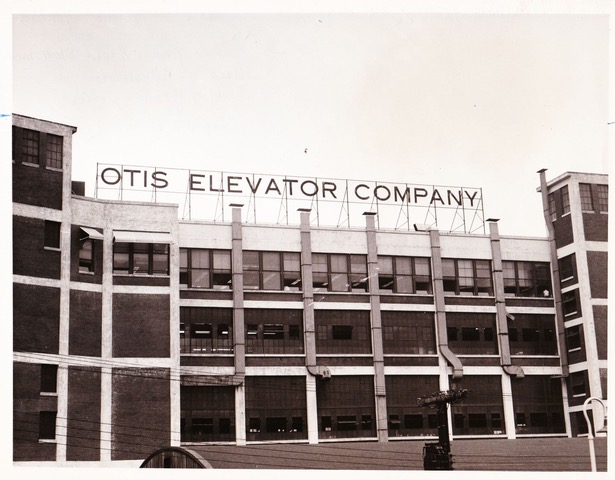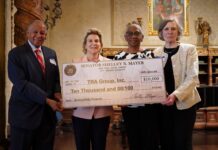
The Otis Elevator Plant in Yonkers, still open today, help the US Military during World War II
By Mary Hoar, City of Yonkers Historian, President Emeritus Yonkers Historical Society, recipient of the 2004 Key to History, Yonkers Landmarks Preservation Board Member, Revolutionary Yonkers 250 Chair and President Untermyer Performing Arts Council
Monday, April 14th
April 14, 1937: Philip Sheedy, John Rae and Joseph Surbis were Smith Carpet Company union weavers fired August 7, 1935, for union activity. Rae, Velvet Mill Chair of the company union, had worked eighteen years for the company union; Sheedy worked 19 years for Smith and postponed his wedding when fired. Urbis was a Smith employee for 20 years.
All three men received letters “inviting” them back to their old jobs with back pay for the months they were unemployed.
The National Labor Relations Board found Smith started a company union in violation of law; Regional Labor Relations Board Director Elinore Herrick announced they would work with company officials for “disestablishment” of the company works council, which the “NLRB found was a company union.” Company officials posted notices they voluntarily would comply with the Wagner Act and NLRB recommendations.
Tuesday, April 15th
April 15, 1925: Plans to reorganize the Habirshaw Electric Cable Company were announced by officials of the company. It was believed that this announced would cause the receivership of Habirshaw to be lifted and business would continue.
April 15, 1943: Because of the efforts of former Deputy City Clerk Joe Nowicki, the Polish National Alliance purchased $20,000 worth of bonds from Yonkers! Nowicki was a Board Member of the Polish National Alliance of Brooklyn, the largest Polish fraternal order in the Eastern United States! T. Kosciuszko Group 142, based in Yonkers, was a member of the Alliance, with Emil Yedowitz president. The $20,000 purchase supported the Yonkers Polish community’s “Buy-A-Jeep” drive four days later in front of St. Casimir’s Church.
Wednesday, April 16th
April 16, 1942: Thousands of Otis Elevator workers and families jammed Atherton Street in the Otis complex to hear Commander of Army Services of Supply Lieutenant-General Brehon Somervell congratulate company workers on their contribution to the war effort.
Somervell stated Otis’s plant was “doing a fine job… scheduled to deliver 50 units of production to the Army (in March), it produced 112.” He asked production be sped up because the “war isn’t anybody’s pink tea.” He reminded workers their efforts “…may save American’s lives,” soldiers’ lives on five continents.
Somervell and the twenty Army officials with him toured the Otis complex afterwards.
April 16, 1947: While a cordial group of eleven people were chatting over dinner at Ben Ring’s Kimble Avenue home, conversation turned to the recent smallpox scare and the importance of vaccinations; this convivial group of friends quickly turned dinner into a vaccination party! Dr. Morris Woodrow happened to be part of the group… and happened to have his bag with vaccine in his car. In a very short time, he immunized everyone at the party!
Thursday, April 17th
April 17, 1942: Former East Coast Chief of the Bund Storm Troopers Hans Meyer, Fox Terrace, announced he gave full information about himself to the FBI, and stated he always will be a “true American,” no matter what happened in his case.
Meyer worked for Otis Elevator Company. Otis Works Manager John Hornung and Personnel Manager Charles Edgar jointly stated he was a “loyal employee” and his work was “perfectly satisfactory and we know nothing detrimental about him.” They had no plans to dismiss him, since Meyer’s job did not involve manufacturing war material.
Because of his former affiliation, Crescent Post Commander Maurice Zellner asked Otis officials to discharge Meyer, “and all others in similar categories.” Zellner said his Post sent skilled mechanics and qualified guards to Otis for employment, and were turned down. Horning responded, “any skilled mechanics physically fit would be put to work at a moment’s notice,” and asked the post to send him the list of men.
Meyer’s two daughters, both American Citizens, were stranded in Germany with their mother.
Friday, April 18th
April 18, 1921: Mayor William Wallin asked the Simon Borg Estate for permission to use Pelton Field to play summer baseball. Yonkers promised the Estate it would grade the field and put it in good shape.
April 18, 1942: After careful examination of materials, styles and colors, the 225 women Otis Elevator employees selected their “slack suit uniforms,” adopted to protect them from injury. Dark blue whipcord slacks and blouses were more sensible to protect them and give them the needed freedom of movement while working with machinery.
Because so many men were serving in the Armed Forces, women were working as inspectors, assemblers, coil winders, armature winders and milling machine operators.
The company expected to hire many more women!
Saturday, April 19th
April 19, 1915: Alexander Smith and Sons Carpet Company replaced their three-days-a –week schedule with a four-days-a-week schedule.
April 19, 1942: RKO Strand Theater joined thirty area theaters showing child friendly movies for the weekend, movies selected from a list considered appropriate for children chosen by the Schools Motion Picture Committee, an organization of teachers and parents in local schools. The Strand showed Mr. Bug Goes To Town, Corsican Brothers and Blondie Goes to College.
Sunday, April 20th
April 20, 1886: Yonkers streetlights were electrified.
April 20, 1951: Fifty businessmen from Lincoln Park Jewish Center joined together to search for six men, including four from Yonkers—Paul Ryer, Anthony Iveli, Paul Kane and his son Neil—who went missing while fishing on Long Island Sound five days earlier. Their boats capsized during a sudden storm near Norwalk, but families hoped they had made it to one of the small islands sprinkling the Sound. The Coast Guard, a helicopter and a patrol bomber had searched for the missing men earlier in the week.
Paul Ryer’s body was found a month later; Neil and Paul Kane’s bodies were found the following week.
Questions or comments on this column? Email YonkersHistory1646@gmail.com.
For information on the Yonkers Historical Society, Sherwood House and upcoming events, please visit our website www.yonkershistoricalsociety.org, call 914-961-8940 or email info@yonkershistoricalsociety.org.





